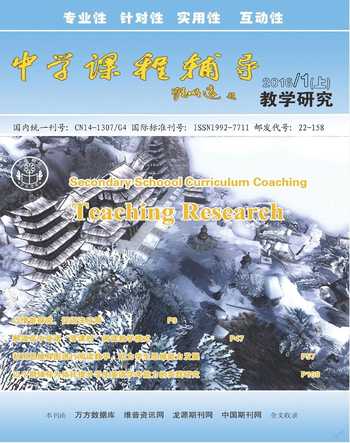巧用牛顿生活小故事,激发语法课堂新活力
2016-05-30周懿
周懿
摘要:本文以牛津英语七年级教材上册Unit3 Grammar为例,论述教师如何使用牛顿与苹果的故事来创设语篇,层层深入,指引学生在故事中习得语法,并通过故事获得情感、态度与价值观的升华。
关键词:语篇创设;语篇教学法;图文结合
中图分类号:G632.0 文献标识码:A 文章编号:1992-7711(2016)01-0125
语法课向来是教师和学生的难题。课堂枯燥,学生没劲,从而掌握和运用知识的程度低。那么,怎样才能把语法习得这个环节处理得既有趣又高效呢?以牛津七年级上册Unit3 中的Grammar模块为例,该模块介绍“人称代词的主格与宾格形式”。在前一节Reading中,有一个重难点句型Who is that man in a white shirt?,该句中,介词词组作为后置定语修饰中心名词。笔者在语法课的初始环节—复习反馈中设计了一道类似题:
The man under the apple tree is my brother. (划线提问)
__________________________________①__________________________________②
1. Which man is your brother?
2. Who is the man under the apple tree?
在学生说出答案以后,笔者给予肯定和赞赏,并顺势向全班同学抛出问题:“Thank you, you really did a good job. Ok, now you guys, lets have a brainstorm. What comes to your mind when you see the two phrases ‘ the man and ‘the apple tree? Can you think of something interesting about a man and an apple tree?”经过短暂思考,有学生举手回答说是牛顿和苹果的故事。于是,笔者接着鼓励他:“Can you share the story with us?” 学生询问是否可以用中文,得到肯定之后,学生绘声绘色地描述了这个经典轶闻。笔者带领全班同学鼓掌,对这位学生表示感谢和赞赏:“Very wonderful expression! Thank you! You are a good storyteller!”紧接着,笔者转向全体同学:“ Now I will teach you to tell the story in English. Dont worry, it is easy. And when I am telling the story, I will show you some sentences and pictures on the screen. Some words are in red, and some are in blue. Pay attention to these words and try to think over two questions. The first one: Are the words in red and blue of the same classification? The second one:What is the relationship between the story and the lesson we have in this class?”
此刻屏幕上呈现牛顿的一系列图片与相应的句子。一张图片配一句文字。在甄选图片时要注意两点,其一,写实肖像与漫画人物的图片相结合,既真实又有趣。其二,图片内容需与配对的文字相符,这样图文统一,有助于学生对部分单词与句子的理解。
学生边听笔者讲故事边观看图文,对这则英文小故事构成一个初步的记忆,并开始思考蓝色与红色单词各自的意义与彼此的异同。图文片段呈现完毕,再次呈现语篇全文:
This person is Newton, a great man from the UK. Do you know him and the great apple? One day in 1665, Newton is walking in a garden. Then he stops and sits down under a big apple tree. Suddenly, an apple falls down on him. He looks at it and starts to think: why does it fall down but not go up?Years later after that,he works very hard and finds out the law of gravity.
笔者开始询问学生灰色与深灰色单词的各自词义。学生说出Newton是人名“牛顿”,UK 是国名“英国”,garden是地名“花园”,apple则是物名“苹果”。而 he,him 和it表示“他”“他”“它”。那么,这些单词都是一类词吗?学生答,不是,灰色单词都是名词,而深灰色单词是代词。
于是,笔者紧接着在屏幕上呈现一句语篇中的句子:
He looks at it and starts to think.
问题:句中的he 和it 分别指什么?
这个问题很简单,学生纷纷回答道,he 代指Newton牛顿,it 代指apple苹果。
笔者顺势引导学生做出总结:“Newton is a man, and an apple is a thing, so we can use personal pronouns to refer to people and things.”(牛顿是一个人,苹果是一个物体,所以人称代词的用途就是来替代上文中人或物的名词。)
在得出第一个结论后笔者乘胜追击,在屏幕的左右两侧各呈现一段相似的语篇:
Left: This person is Newton, a great man from the UK. Do you know Newton and the great apple?One day in 1665, Newton is walking in a garden. Then Newton stops and sits down under a big apple tree.
Right: This person is Newton, a great man from the UK. Do you know him and the great apple?One day in 1665, Newton is walking in a garden. Then he stops and sits down under a big apple tree.
笔者抛出了第二个问题:“Well done ! Now lets play a game. Try to find out the differences between the two discourses. And have a discussion with your group members—which is the better one?”
学生听到玩游戏立刻来了劲儿,小组成员们立刻叽叽喳喳开始讨论起来。一分钟不到,问题轻松搞定!几个学习小组都找出了两个语篇的不同点。第一篇中的人物全部用了名词Newton,而第二篇中,则在两处分别用了代词him 与he 代替。那么哪一个更好呢?学生们一致认为第二个语篇好。较之于第一个,灵活运用代词来替代名词,避免重复和啰嗦。由此,在笔者的引导下,学生顺利得出了人称代词的第二个使用规则。
第三个思考题继续深入:
1. Do you know him and the great apple?
2. An apple falls down on him.
3. He looks at it and starts to think.
问题:原语篇中这三个句子中的him 与he 分别代指谁?
学生一致回答:“牛顿”。
“那为什么这个用him,那个用he?全都用一样的he 或是him不就行了?”
有学生举起了手:“因为前两个句子的人物都是作宾语,而第三个句子中的人物是句子的主语。”
回答正确!于是笔者引导全体同学总结规律:“So we should use subject form when the noun is the subject, and replace the noun with an object form when it is the object of a preposition or a verb.”
代词作为句子的主语需用主格形式,作为介词或动词后的宾语需用其宾格形式。总结出来还不够!笔者还要考查学生使用规则来判断的能力。笔者给出了一个practice:
1. He looks at it and starts to think.
2. Why does it fall down but not go up?
笔者问道:“Are the two forms the same with each other, or are they different? Give your choices and reasons.”
这两个it是否形意相同?或是形同意异?
一位学生答道:“这两个it 不一样,第一个是作为介词at的宾语,是宾格形式,而第二个则是句子的主语,为主格形式。”
Perfect!至此,学生在笔者的层层引导下,通过自己的思考,总结出了人称代词的三个基本使用规则。那么,课堂开头的最后一个问题学生心中应当有答案了吧!
“Do you still remember the question? What is the relationship between the story and the lesson we have in this class?”
是啊!学生恍然大悟,原来在对故事的一个个问题的思考与探讨中,自己已经掌握了今天的语法知识了!学生们不禁调侃起来:“牛顿果然是中国好导师啊!”听完这句话,我突然眼睛一亮,这是一个绝好的教育契机!笔者便因势利导:“So what do we learn from him? Or in another way, is there anything important we can find from his famous story?”
学生你一言我一语地抢答:“Thinking is very important!”“Be hard-working and you will get success.”也有学生相当幽默:“The apple is a lucky dog. Newton should thank it.”
学生的感想真实有趣,笔者对学生的发言表示肯定与赞赏,并总结道:“Thanks for your sharing, guys. We know that there are two great apples in the world which have great impacts on human beings. The first one is the apple we learn in this class. People start to know that there are indeed some rules in the whole cosmos. And the second one is the mobile phone developed by the Apple Inc., which makes itself not only a mobile but a fashion icon. So where will be the third apple? Maybe it is in your hands.”
听完这番话,学生盯着笔者,陷入了沉思,笔者从他们明亮的眼睛里看到了一种动力和期许。确实,我们对他们的情感和态度的教育,正是在学生自己的课堂生成中得以实现。我们创设独特的课堂,激发学生的想象力,他们的反馈给予我们再次教育的灵感,学生又再次得到深层次的体会和感悟。在这堂课上,语法的习得不再是传统的、枯燥无味的单向灌输,而是学生的主动思考和归纳总结。我们的一点智慧可以激发学生无穷的智慧,这样的语法课才是高效的、有意义的。
(作者单位:江苏省无锡市太湖格致中学 214000)
